Content
This equation enables investors to easily determine how much of a company’s profits are being distributed to shareholders as dividends. The retained-earnings account in the stockholders’ equity section of the balance sheet holds the accumulated profits, minus dividend payments. The statement of cash flow shows a company’s cash flows from operating, investing and financing activities.
- On a company’s balance sheet and other financial statements, the accumulated retained earnings since the day the firm went into business are listed under stockholders’ equity.
- Investors often measure the dividend appeal of a certain investment security is via the dividend yield.
- But before we do that, we’ll go over some commonly used terms for investors who are new to dividend investing.
- There are no guarantees that working with an adviser will yield positive returns.
- The DRIP is operated on a mandated basis and your election to participate will apply to all future dividends until you cancel or otherwise terminate your mandate or sell/transfer your shares.
- Companies may cut or even eliminate dividends when they experience hard economic times.
- Advisors say one of the quickest ways to measure a dividend’s safety is to check its payout ratio, or the portion of its net income that goes toward dividend payments.
She has contributed to numerous outlets, including NPR, Marketwatch, U.S. News & World Report and HuffPost. Miranda is completing her MBA and lives in Idaho, where she enjoys spending time with her son playing board games, travel and the outdoors. Keep in mind that dividend yield is rarely consistent and may vary further depending on which method you use to calculate it. However, the context surrounding the issuance of a high dividend per share (DPS) must be considered. Working with an adviser may come with potential downsides such as payment of fees (which will reduce returns).
Dividend Per Share Formula
After a stock goes ex-dividend (when a dividend has just been paid, so there is no anticipation of another imminent dividend payment), the stock price should drop. If the dividend stays the same, then stock price and dividend yield have an inverse relationship. When a company’s stock price goes up, the dividend yield goes down.
The stock price can also fluctuate, impacting the overall return on investment. As with any investment, thorough research and a well-balanced portfolio strategy are essential when considering dividend stocks. A business reports beginning retained earnings of $500,000 and ending retained earnings of $600,000, so the net change in retained earnings in the period was $100,000. During the year, the company also reported $180,000 of net profits. In the absence of any dividend payments, the entire $180,000 should have been transferred to retained earnings.
What Are Cumulative Dividends?
Certain types of specialized investment companies (such as a REIT in the U.S.) allow the shareholder to partially or fully avoid double taxation of dividends. Property dividends or dividends in specie (Latin for “in kind”) are those paid out in the form of assets from the issuing corporation or another corporation, such as a subsidiary corporation. They are relatively rare and most frequently are securities of other companies owned How Do I Calculate Cash Dividends? by the issuer, however, they can take other forms, such as products and services. When you reinvest your dividends, instead of cashing them out every year or quarter, your investment benefits from compounding. Over time, compounding effects can drastically enhance your returns. A recent report from Hartford Funds indicates that since 1970, 78% of the total returns of the S&P 500 can be attributed to reinvested dividends.
What are the 4 types of dividends?
- Cash dividends.
- Stock dividends.
- Property dividends.
- Scrip dividends.
- Liquidating dividends.
Cash dividends are typically credited to investors’ brokerage accounts where the stock holding resides. Although it is much less common, investors who hold shares directly, and not through an investment account, may be issued paper cheques for the dividend amount they are entitled to. From the Latin “dividendum” meaning a “thing to be divided,” a dividend is a distribution of profits made by a corporation to its shareholders.
Government policy on dividends
Those in the 15% to 37% tax bracket pay 15%, and those at the 37% tax rate pay 20%. A company that is growing rapidly most likely won’t pay dividends. The earnings of the company are instead reinvested to help fund further growth. Many investors enjoy receiving dividends and view them as a steady income source. Therefore, these investors are more attracted to dividend-paying companies.
Dividends are a portion of a company’s profit that is paid out to each shareholder, in addition to any gains a shareholder gets when the price of the company’s stock increases. It may vary depending on the situation but overall a good payout ratio on dividends is considered to be anywhere from 30% to 50%. Dividends are earnings on stock paid on a regular basis to investors who are stockholders.
Potential Issues With Dividend Yield
You will need the financial statements of two consecutive periods to calculate dividends, retained earnings and cash flow. If you are making a financial decision, you should consider the annual dividend income available to you. Investing in dividends allows you to earn a consistent income stream for the long term. Profits from a company are distributed to shareholders in dividends. The method of calculating dividend income using Excel is simple and can be completed in a matter of minutes.
Is a cash dividend taxable?
They're paid out of the earnings and profits of the corporation. Dividends can be classified either as ordinary or qualified. Whereas ordinary dividends are taxable as ordinary income, qualified dividends that meet certain requirements are taxed at lower capital gain rates.
Please respond to any questions I receive in the comment section. The calculation of accumulated unpaid dividends depends on the term sheet. Sometimes the term sheet will state that the cumulative dividends are only paid if the company liquidates (financial hardship or by sale).
